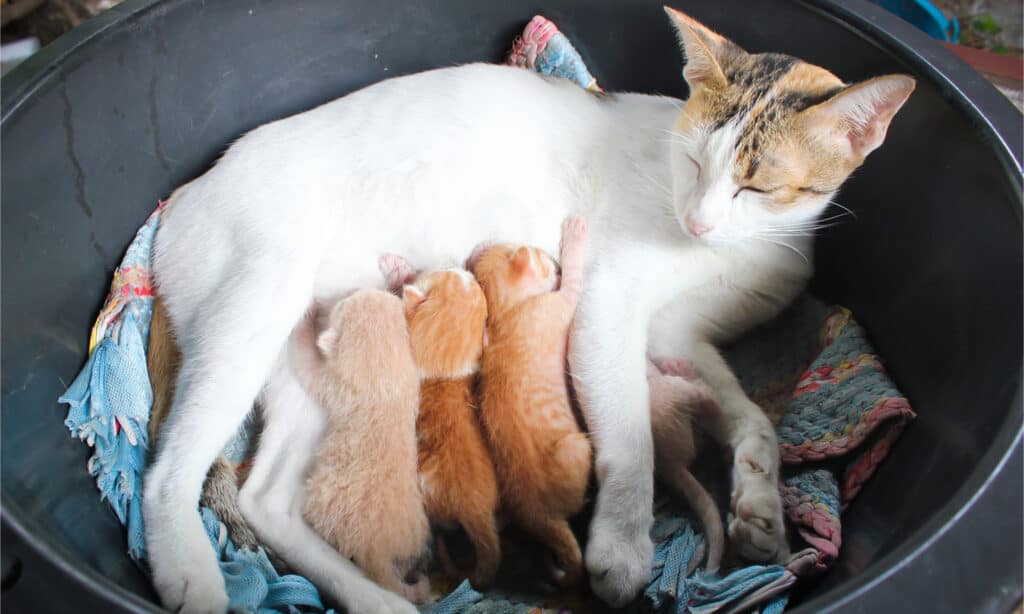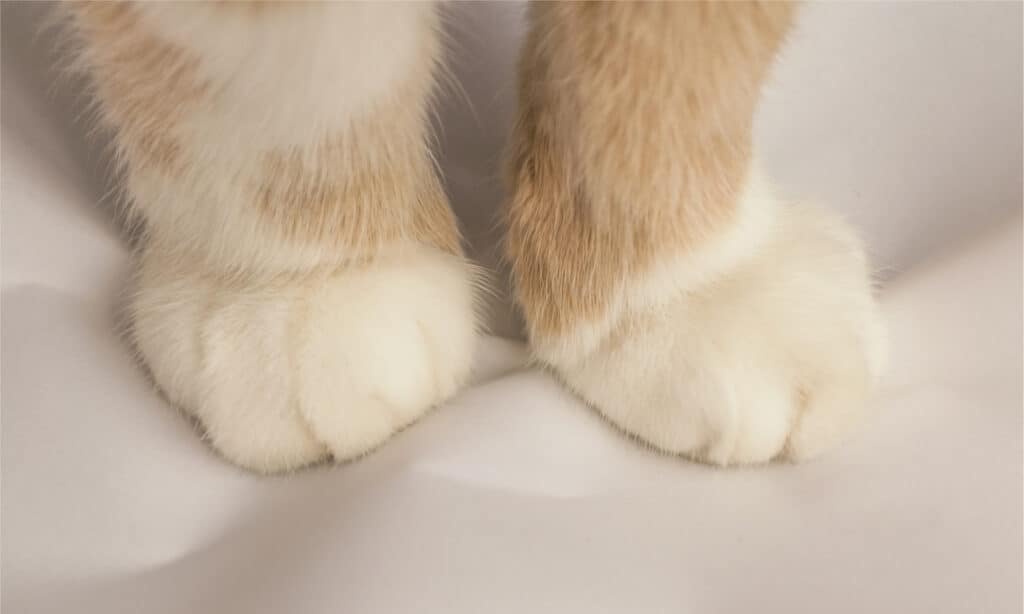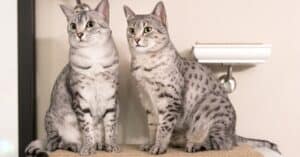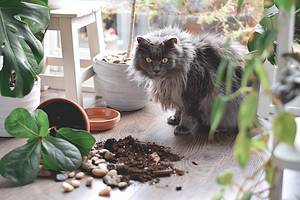Cats exhibit several behaviors when they relate to humans. These behaviors include meowing, purring, rubbing their head or sides against you, kneading, etc.
You’ve probably caught your feline friend a few times “making biscuits”— pushing their paws in and out against a soft object or their blankets before taking a nap. This behavior is known as kneading.
Although not all cats do this, it is a relatively common behavior among young and adult cats. But why do they do this? Does it provide some sort of comfort for them, or do they do it for no specific reason?
Based on popular theories and research, we have some reasons to justify the “biscuits-making” actions of your feline friend. Read on!
Five Reasons Why Cats Knead
Neotenic Behavior
Neotenic behaviors are generally referred to as juvenile or kittenhood behaviors retained as adults. This behavior isn’t just common in cats. Some selectively bred domesticated dogs have been found to show juvenile traits as adults.
This theory has received more consideration in understanding why your cats knead.
This is because your cats, as kittens, needed to stimulate milk release from the mom cat mammary glands for feeding. These stimulative actions were known as kneading.
This theory made more sense to understand why cats kneaded as it was a trait retained by most adult cats years after weaning.
But the flaw of this theory was that it couldn’t provide an answer to why wild cats do not knead. The assumptions that ensued stated the love and care you give your cats for domestication is responsible for your feline friend retaining its juvenile behaviors. Wild cats do not have this liberty.

Kittens knead their mother to stimulate her mammary glands to expel milk.
©Grey Carnation/Shutterstock.com
Cats Knead When They Are Happy
Kneading is a comforting behavior to your feline friend. This behavior suggests your cat enjoys physical interaction. When your cat is in a good mood, it kneads on you or other cats, even dogs, to show a shared emotional bond.
Cats, who are socialized felines, enjoy human company. When your cats are in a relaxed state or receiving care from someone they love, they knead to show their affection and comfort.
Cats also knead other cats and dogs as a socializing behavior. Whenever your cat kneads you, you should know they are just trying to show affection because they are happy.
Kneading to Stretch Muscles
Cats naturally love to stretch every stretchable muscle within their body. They are natural yoga masters. They love to work out kinks left over from taking a nap. Stretching helps to keep your feline friend active.
Since cats generally take so many short naps throughout the day, they consequently spend some time stretching as well. Stretching helps to improve blood flow and get their muscles ready for movement. One of their stretch routines is Kneading.
It all just makes more sense if you consider it this way— if you have sore shoulders, you wouldn’t mind a nice stretch. You could even ask your friend to help pull your arms. And pulling against a solid surface does the job as well.
Kneading is one of the ways your feline friend stretches and relieves pressure on their pass and limbs.

Cats knead for a variety of reasons, including because they’re happy.
©Jamarale/Shutterstock.com
Territory Marking
Like the big wild cats, tigers, and Lions, domesticated cats are naturally territorial. This is an in-built survival instinct. In a world of competition, cats often try to leave their mark on things they love and things they believe belong to them.
Cats have various territorial behaviors. Your cats naturally mark their territory by scent rubbing, and scratching. One of their territorial behaviors is Kneading.
Cats secrete pheromones. Pheromones are cats’ active territorial hormones. It is different within various cats but unique to a particular cat. Cats have several scent glands that release pheromones.
These glands are concentrated around their face, on their chins, forehead, lower ears, cheeks, and around their mouth. These hormones are also present in their urine. Generally, these glands are abundant and make it easy for them to rub off and mark what’s theirs.
A cat tries to rub off its pheromones on you to communicate with other cats that you’re his, and they should keep off. So, how does kneading help with their territoriality?
A few of these several scent glands are present in your feline friend’s paw pad. So by active kneading, the territorial hormone, pheromone, is being deposited on you.
The most interesting thing about this territorial hormone is that all cats, no matter how old they are, will understand these signals.
So while your feline friend is Kneading and playing with your body, it might be communicating with other cats that they should keep off its property. Isn’t that just cute?
Reproductive Behavior
Another interesting reason why your female cat may decide to knead might be because she’s in heat.
Greenstein recommends that you keep an eye out if your unspayed female cat starts acting differently. And it shows behaviors such as rubbing up against people or surfaces, being extra affectionate, making new vocalizations, and kneading— especially when prospective mates are around. It might just be a sign she’s ready for mating.
However, kneading is just one of the many reproductive behaviors that cats display before the actual mating process.
Why Do Cats Knead Their Blankets and Other Objects
As stated above, cats start kneading as kittens while nursing from their mother to help stimulate milk production.
So, do not be surprised you might find your cat kneading blankets or other soft objects around the house. This is because kneading has been mentally associated with rewards such as mother’s milk. So, your adult cat might want to reciprocate its juvenile behavior whenever it sees soft surfaces, hoping for a reward. Some even suckle after kneading.
Why Do Cats Knead Their Owners?
We’ve been trying to understand while cats knead. So, why do cats knead their owners? Should you be concerned if your female cat starts kneading you?
Cats are naturally very affectionate creatures. If your feline friend is curled up and kneading your lap as you pet him, he’s simply returning the affection and trying to tell you he loves you too. Kneading makes cats feel good, and when they knead you, they might be trying to make you feel good as well.
A downside to the way of showing affection that your feline friend has chosen is that it can be quite painful. This is because your cat’s paws are laced with sharp nails. And the happier it is, the harder he will dig in. However, your cat is not intentionally hurting you. It’s just trying to be affectionate. He doesn’t know it hurts. Never punish your cat for this.
What you can do is make a habit of trimming your cat’s nails with nail clippers or using nail guards. You can also try placing a soft or thick barrier between your cat and your lap, so it doesn’t hurt you.
Is It Bad If My Cat Doesn’t Knead?
If your cat doesn’t knead you, this doesn’t necessarily mean they hate you.
Research studies, according to Finka shows, all cats are not alike. There’s a notable amount of differences between individual cats. One of the differences is their preference for kneading.
The need to knead or its absence doesn’t automatically indicate how your feline friend feels about you. At the same time, it is concluded that cats with an early positive experience with you or other humans are more likely to knead you or their owners.
Finka says, “I think there’s quite a number of variable traits between cats. This includes how they chose to express themselves”. She added, ” For example, while some friendly cats may be very vocal, others may hardly meow at all.” This same principle applies to kneading behaviors in cats.
And in most cases, kneading could be an indicator of relaxation and comfort (as stated above). But it doesn’t necessarily have to be a cause for worry if your feline friend doesn’t decide to knead.
Conclusion
Kneading is a natural and instinctive cat behavior. We’ve been able to share a few likely reasons why your cat may decide to “make biscuits” on its blankets or your lap. The most common reasons that cats knead are because they want to express happiness, exhibit territorialism, stimulate milk production, or as a reproductive signal that they are in heat.
However, It’s perfectly okay if your feline friend doesn’t knead. But you might want to watch out for other behaviors, like when your usual friendly cat starts becoming withdrawn and dull. It’s okay to be oversensitive to your feline friend’s attitude change.
Since your feline friend cannot communicate their emotions verbally, it is paramount that you, as a pet owner, understand their behaviors. So you can know when they need help or when you should stop them from doing some things.
Below are a few articles that explain cats’ behaviors and can help you understand your feline friend better:
The photo featured at the top of this post is © Foxhound photos/Shutterstock.com
Thank you for reading! Have some feedback for us? Contact the AZ Animals editorial team.






